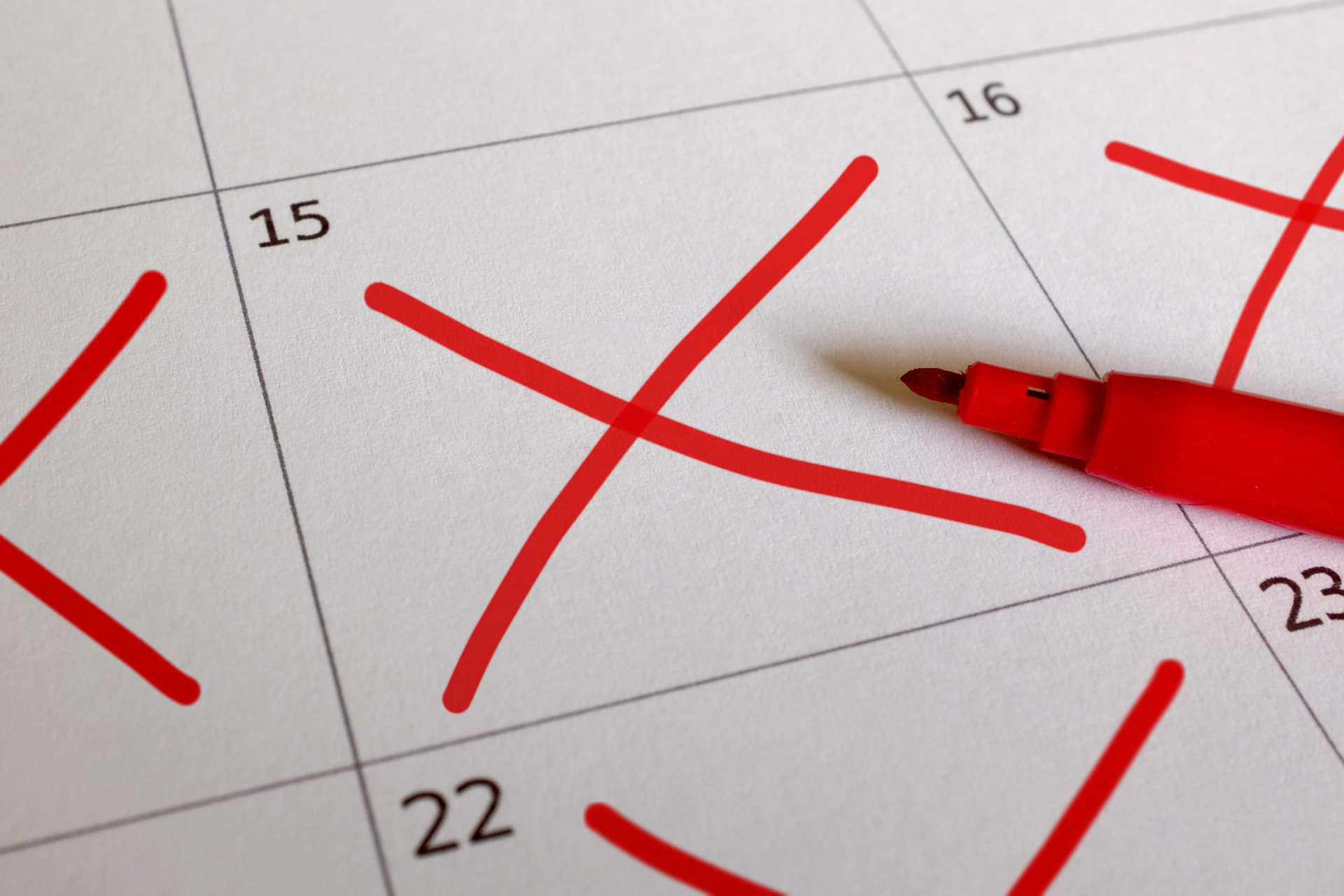7 workflow optimization techniques you may not have heard of
Time is always running out, and business is always overwhelming - it is an axiom of the twenty-first century. It is not surprising that humanity is in a constant search for a magical ritual (or methods of organizing a work process, as they are commonly called) that will save us all from time pressure, deadlines, procrastination and other temporal traps. The most effective of them, of course, are already known to you, however, through the efforts of our team, we made a small hit parade of slightly less common techniques that we used to successfully apply in our work.


It doesn’t sound too appetizing, but that's the point. The list of tasks for the day always contains those that do not cause us any enthusiasm, and, according to Mark Twain, who introduced the name of the methodology in everyday life, it is better to start work with them. There are at least two arguments in favor of this approach: firstly, the longer you put off an unpleasant business, the harder it is to take it, secondly, overpowering yourself and getting rid of onerous duty, you get a charge of positive emotions and motivation at the very beginning of the day. First of all, the “swallow the frog” method is suitable, of course, for procrastinators - it simply does not allow them to turn to a bad habit. To a much lesser extent, it is suitable for people with a busy schedule and a lot of diverse tasks: it is much more expedient for them to sort things out according to other criteria (urgency, priority).

This original technique was developed by Joel Runyon.for freelancers, small business owners and other people with relative freedom of action and movement. The first steps look quite standard: divide the entire amount of work into small tasks, group them into several thematic clusters, determine the approximate lead time for each. And then - start looking for cafes, libraries and other cozy places of public use in your area. The essence of the “Workstation Popcorn” approach is to change the location each time moving from one cluster to another. According to the author, this helps to focus as much as possible, switch between diverse tasks without mixing them, and avoid blurring the border between working and free time - a common problem for those who work from home. Moreover,

The technique from Jay Shirley is enticingly simple. In fact, it comes down to the fact that when planning for the day, you keep in mind three questions:
Such a minute of reflection in the morning helps you balance your lifestyle and priorities. On the one hand, you are looking to the future, not content with settling short-term problems, on the other, you are not sacrificing urgent and urgent matters in favor of abstract prospects, and finally, you are not at risk of burning out in the pursuit of productivity. By the way, it is not at all necessary to always equally distribute time and effort between these three points: on some days you will probably have to almost completely let go on current tasks, and on some you can allow yourself more time to devote to pleasure.

Music is not just an indulgence and a simple way to have fun without interruption from production; it can become a powerful tool for optimizing the workflow ... if, of course, it is correctly selected. Studies show that as background noise, you should choose familiar, unobtrusive, not too loud music without words. In particular, tracks in the ambient genre, synthesized sounds of nature, tunes from video games are well suited. You can create your own set of your favorite records of this kind or rely on the taste of the focus @ will systemcreated just for this purpose. The last site contains a whole collection of playlists with music of different genres, which helps the listener to concentrate and sets the appropriate rhythm. With such an audio track, it is also easier to stick to the schedule - set a timer, and a break in playback will remind you that it's time to relax.

The technique from the popular comedian Jerry Seinfeld may have been remembered by you in one of our previous articles . This simple, but effective scheme is good for those who are trying to form new habits or more regularly devote time to some activities. All you need is a calendar (separate for each habit) and a red marker. If one day you managed to fulfill your plan, mark it with a cross - that's all. This is a purely psychological trick: you just have to earn a few crosses in a row, as you already want to make the chain longer and longer. Thus, the process of self-renewal of motivation is launched. The disadvantages of this method include insufficient flexibility (say, it does not take into account unforeseen circumstances and does not allow you to allocate days to rest).Adam Dachis in his article offers some modifications that will help adapt it for all occasions.

In his book “Work the System”Sam Carpenter encourages us to pay attention not only to “what” and “how much”, but also to “when”. According to the theory of the author (and the personal experience of many of us), during the day our ability to work with maximum efficiency varies greatly. Efficiency at every moment consists of three components: the amount of energy, the level of concentration, the degree of motivation; however, they are all determined by individual biological rhythms. The key to effective time management is to track peaks for all of these indicators and, laying charts on top of each other, identify periods that are favorable and unfavorable for work. It will take, however, no less than three weeks, during which you should live according to the biological clock, do not use any stimulant drugs and carefully monitor and evaluate your condition.

LightsAndCandy offers a kind of compromise between the sensational orientation on the biological clock and the Pomodoro technique. Despite the undoubted effectiveness of the latter, many find some shortcomings in it. The most serious of them are the fixed length of sessions, which presses, creating the fear of time pressure, and regular forced breaks that can interrupt the state of the stream. The advantage of the LightsAndCandy approach is that it allows you to start and end work sessions more smoothly and naturally, without pushing you into a tight time frame. The author proposes to adhere to the following scheme of actions:
Perhaps, after a while looking through the notes, you will begin to notice patterns: for example, in the morning your sessions last longer than after lunch or long “breaks” are followed by longer periods of uninterrupted work. Thus, you can gradually adjust the mode to your own biorhythms.
We hope that any of these seven methods will seem worthwhile to you, we have no doubt that you will use it from Monday, and in every way we welcome the exchange of experience in the comments.

Swallow the Frog

It doesn’t sound too appetizing, but that's the point. The list of tasks for the day always contains those that do not cause us any enthusiasm, and, according to Mark Twain, who introduced the name of the methodology in everyday life, it is better to start work with them. There are at least two arguments in favor of this approach: firstly, the longer you put off an unpleasant business, the harder it is to take it, secondly, overpowering yourself and getting rid of onerous duty, you get a charge of positive emotions and motivation at the very beginning of the day. First of all, the “swallow the frog” method is suitable, of course, for procrastinators - it simply does not allow them to turn to a bad habit. To a much lesser extent, it is suitable for people with a busy schedule and a lot of diverse tasks: it is much more expedient for them to sort things out according to other criteria (urgency, priority).
Technique "Workstation Popcorn"

This original technique was developed by Joel Runyon.for freelancers, small business owners and other people with relative freedom of action and movement. The first steps look quite standard: divide the entire amount of work into small tasks, group them into several thematic clusters, determine the approximate lead time for each. And then - start looking for cafes, libraries and other cozy places of public use in your area. The essence of the “Workstation Popcorn” approach is to change the location each time moving from one cluster to another. According to the author, this helps to focus as much as possible, switch between diverse tasks without mixing them, and avoid blurring the border between working and free time - a common problem for those who work from home. Moreover,
“Should, should, want”

The technique from Jay Shirley is enticingly simple. In fact, it comes down to the fact that when planning for the day, you keep in mind three questions:
- What should I do today to effectively solve current problems?
- What should I do with long-term goals?
- What do I want to do for my own pleasure?
Such a minute of reflection in the morning helps you balance your lifestyle and priorities. On the one hand, you are looking to the future, not content with settling short-term problems, on the other, you are not sacrificing urgent and urgent matters in favor of abstract prospects, and finally, you are not at risk of burning out in the pursuit of productivity. By the way, it is not at all necessary to always equally distribute time and effort between these three points: on some days you will probably have to almost completely let go on current tasks, and on some you can allow yourself more time to devote to pleasure.
Focus @ Will

Music is not just an indulgence and a simple way to have fun without interruption from production; it can become a powerful tool for optimizing the workflow ... if, of course, it is correctly selected. Studies show that as background noise, you should choose familiar, unobtrusive, not too loud music without words. In particular, tracks in the ambient genre, synthesized sounds of nature, tunes from video games are well suited. You can create your own set of your favorite records of this kind or rely on the taste of the focus @ will systemcreated just for this purpose. The last site contains a whole collection of playlists with music of different genres, which helps the listener to concentrate and sets the appropriate rhythm. With such an audio track, it is also easier to stick to the schedule - set a timer, and a break in playback will remind you that it's time to relax.
"Do not interrupt the chain"

The technique from the popular comedian Jerry Seinfeld may have been remembered by you in one of our previous articles . This simple, but effective scheme is good for those who are trying to form new habits or more regularly devote time to some activities. All you need is a calendar (separate for each habit) and a red marker. If one day you managed to fulfill your plan, mark it with a cross - that's all. This is a purely psychological trick: you just have to earn a few crosses in a row, as you already want to make the chain longer and longer. Thus, the process of self-renewal of motivation is launched. The disadvantages of this method include insufficient flexibility (say, it does not take into account unforeseen circumstances and does not allow you to allocate days to rest).Adam Dachis in his article offers some modifications that will help adapt it for all occasions.
"Biological peak"

In his book “Work the System”Sam Carpenter encourages us to pay attention not only to “what” and “how much”, but also to “when”. According to the theory of the author (and the personal experience of many of us), during the day our ability to work with maximum efficiency varies greatly. Efficiency at every moment consists of three components: the amount of energy, the level of concentration, the degree of motivation; however, they are all determined by individual biological rhythms. The key to effective time management is to track peaks for all of these indicators and, laying charts on top of each other, identify periods that are favorable and unfavorable for work. It will take, however, no less than three weeks, during which you should live according to the biological clock, do not use any stimulant drugs and carefully monitor and evaluate your condition.
The technique of "Flowtime"

LightsAndCandy offers a kind of compromise between the sensational orientation on the biological clock and the Pomodoro technique. Despite the undoubted effectiveness of the latter, many find some shortcomings in it. The most serious of them are the fixed length of sessions, which presses, creating the fear of time pressure, and regular forced breaks that can interrupt the state of the stream. The advantage of the LightsAndCandy approach is that it allows you to start and end work sessions more smoothly and naturally, without pushing you into a tight time frame. The author proposes to adhere to the following scheme of actions:
- Select a task. Write down the time before you start it;
- Work until you feel like taking a break. Record the time again;
- Decide how many minutes you need to rest and set a timer;
- When the time for rest ends, start the second session and repeat the same steps.
Perhaps, after a while looking through the notes, you will begin to notice patterns: for example, in the morning your sessions last longer than after lunch or long “breaks” are followed by longer periods of uninterrupted work. Thus, you can gradually adjust the mode to your own biorhythms.
We hope that any of these seven methods will seem worthwhile to you, we have no doubt that you will use it from Monday, and in every way we welcome the exchange of experience in the comments.
